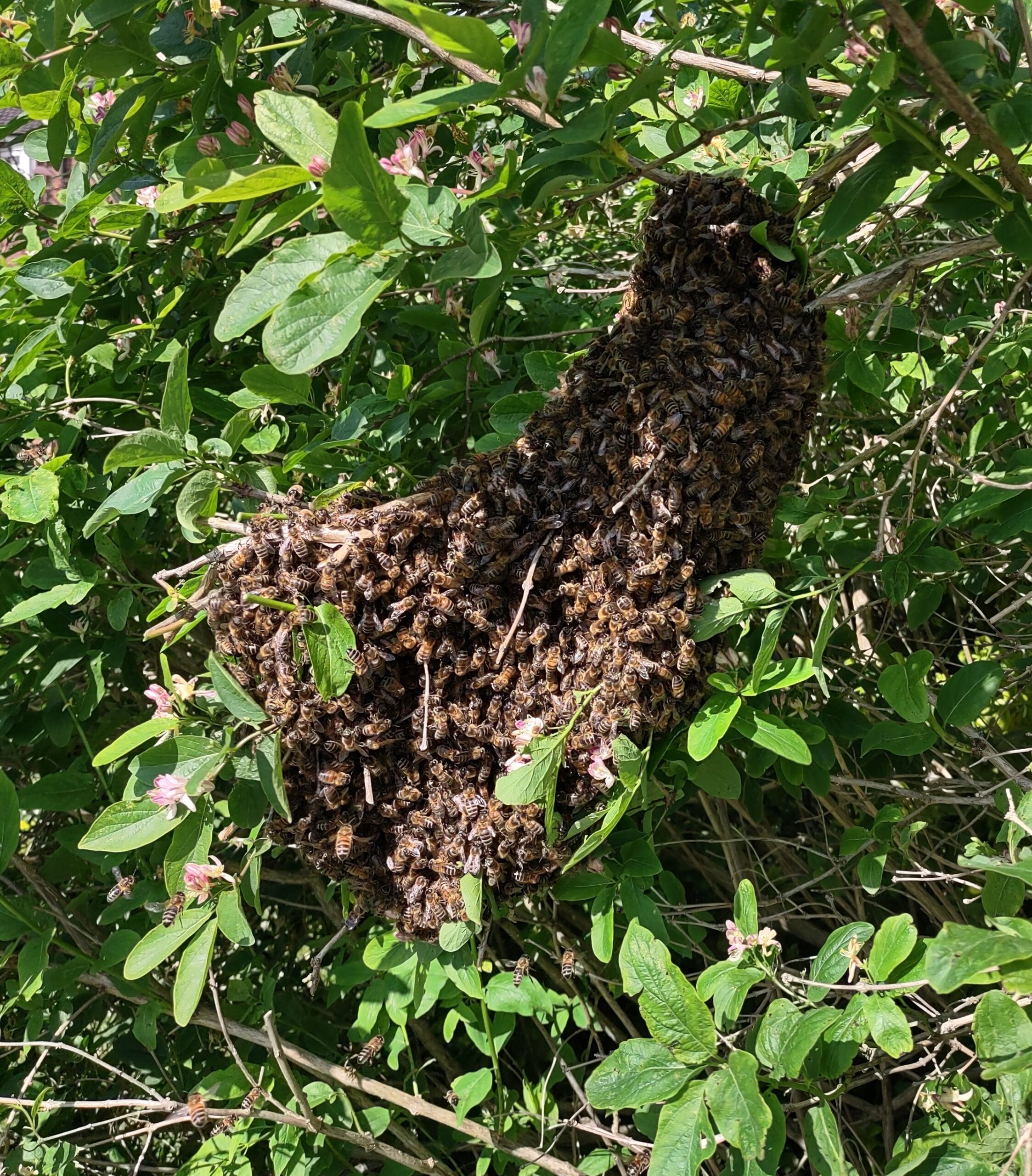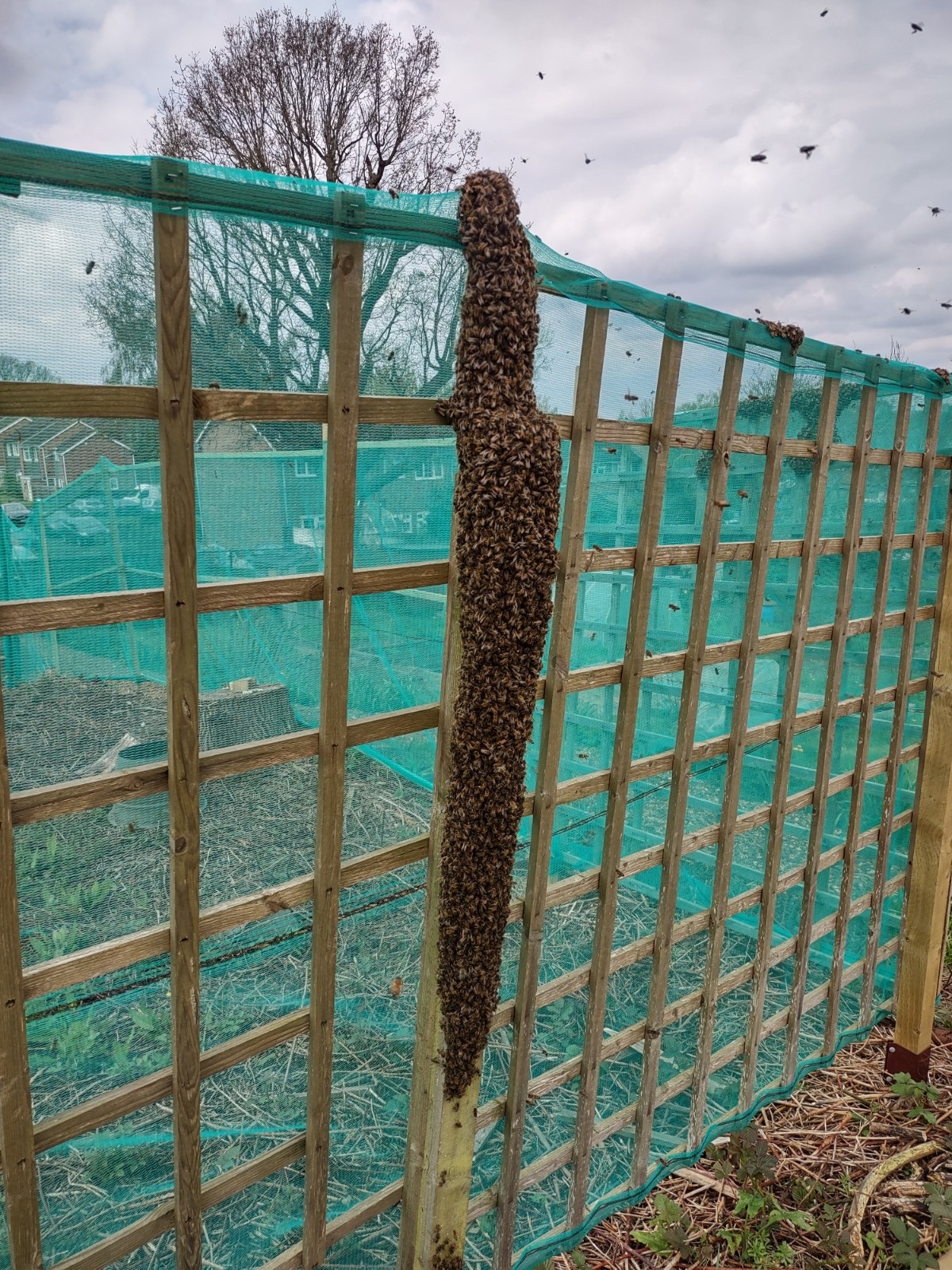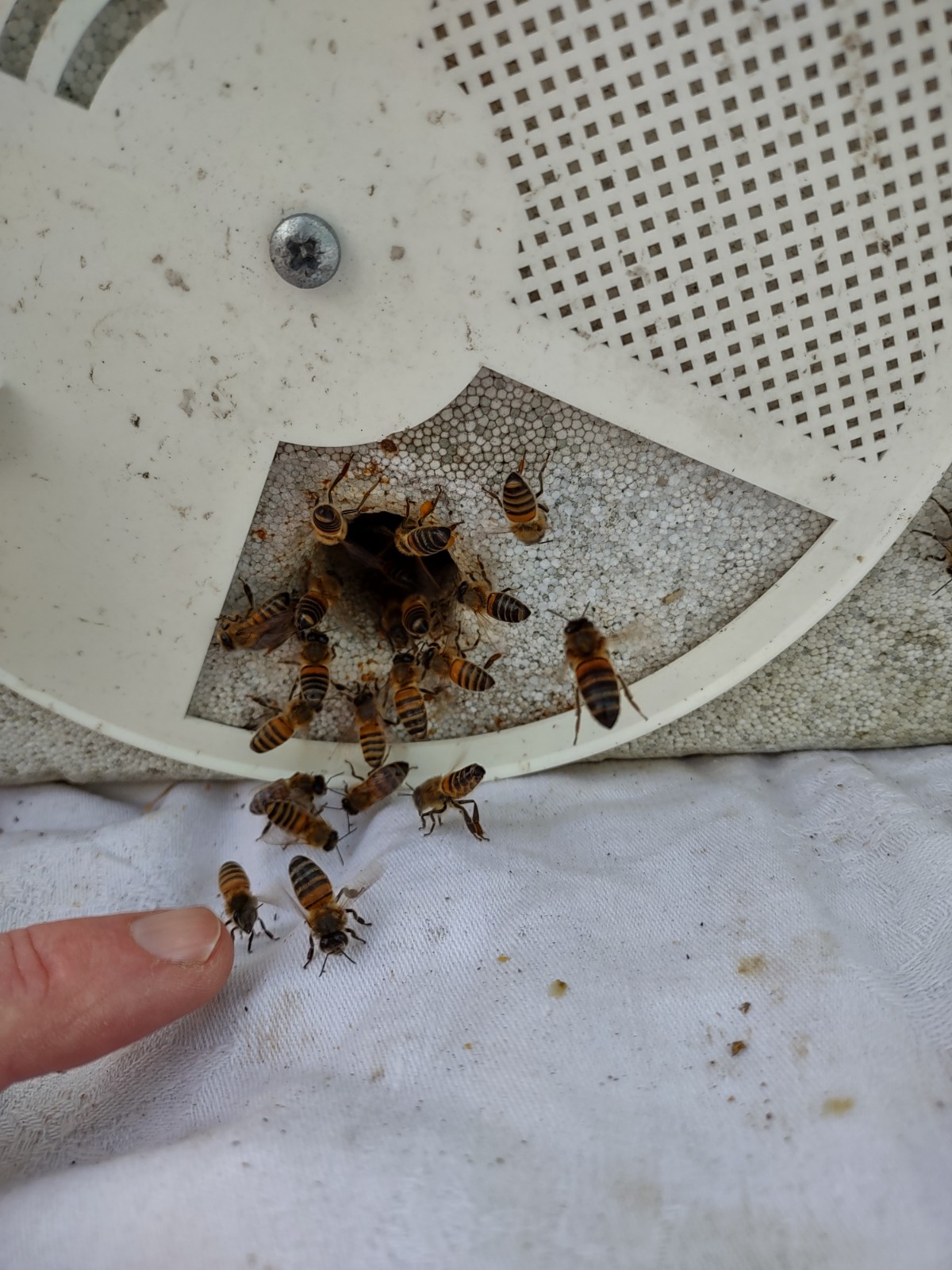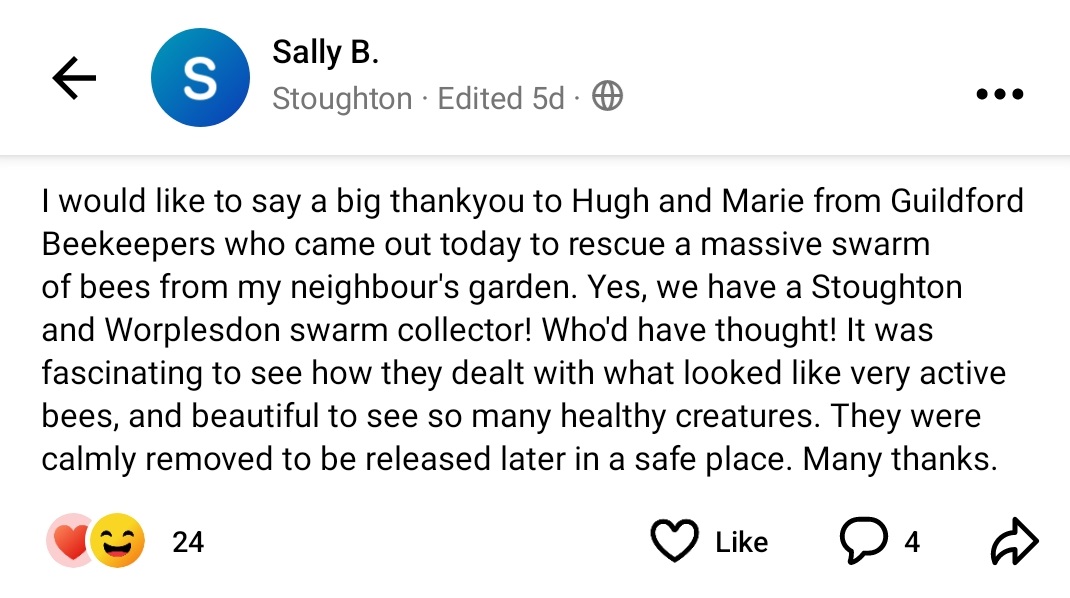 Abraham Lincoln
If given the truth, the people can be depended upon to meet any national crisis...
Abraham Lincoln
If given the truth, the people can be depended upon to meet any national crisis...
 Guildford news...
for Guildford people, brought to you by Guildford reporters - Guildford's own news service
Guildford news...
for Guildford people, brought to you by Guildford reporters - Guildford's own news service
Beekeeper’s Notes: ‘Yes, We Have a Stoughton and Worplesdon Swarm Collector!’
Published on: 1 May, 2023
Updated on: 1 May, 2023
Hugh Coakley keeps bees in Worplesdon
There were swarms galore on the first warm day of the year a couple of weeks ago. We had three phone calls within about an hour calling for help.

A swarm in a bush in Stoughton probably weighed between one and two pounds which works out at about 5,000 to 10,000 bees.
There was a swarm in a bush in Stoughton, one on a tree overhanging a public footpath in Worplesdon and then one near a school.
Why do the bees do it? Well it’s the way they reproduce, how they multiply and keep up a healthy genetic line.

This swarm had arrived a couple of hours before the photo was taken and there were lots of bees still flying around.
The queen can lay as many eggs as the workers can force out of her but she still presides over just one colony. Swarming divides one colony into two or more.
On a secret signal, generally around the middle of the day, the queen and about half the hive swarms away to start a new colony in a new home.
But before they go, they cunningly set off the process in their old home to make new queens. The remaining half left behind has unborn queens just waiting to hatch, mate and start afresh.
So, hey presto, one colony becomes two or more.
The swarming season is generally from May to July so this burst of bee activity is on the early side. It is a magnificent and can be a frightening sight watching and hearing 20,000 bees in flight.
They will swarm if they are short of space or if the queen looks to be a bit weak and they want to be rid of her. Beekeepers try to give the bees lots of room, extra boxes before they need them, to try to ward off their bees leaving them. Good strong queens are helpful as well.

If the queen is inside the box we put the swarm in, bees signal she is inside by lifting their rear and fanning out a pheromone for the other bees to join her.
I love doing the collecting. People are interested to see how we will pick them up, will we get stung, and what will we do with the bees once we pick them up. We are delighted to give a running commentary as we work.

A lovely comment on social media from the neighbour who alerted us to this swarm in Stoughton. It is in our garden now and seems happy enough.
I’ve been to mansions, up ladders and onto rooftops collecting bees from the most unlikely places.
The easiest to collect is if they land on a tree branch at about head height. The hardest is if they are in the middle of a holly bush or 30 foot up in the air.
I am a bit selective nowadays, I rule out high ladders, but other than that, if the bees are accessible, I’ll give it a go.
Recent Articles
- Guildford Institute’s Crowdfunding Project for Accessible Toilet in its New Community and Wellbeing Centre
- Letter: Guildford – Another Opportunity Missed?
- Letter: GBC’s Corporate Strategy – Where Is the Ambition?
- My Memories of John Mayall at a Ground-breaking Gig in Guildford Nearly Six Decades Ago
- Westborough HMO Plans ‘Losing the Heart of the Street’ Says Resident
- College Invests to Boost Surrey’s Economy and Close Digital Skills Gap
- Community Lottery Brings Big Wins for Local Charities
- GBC Housing Plan Promises ‘A Vibrant Urban Neighbourhood’ Near Town Centre
- Hospital Pillows ‘Shortage’ at the Royal Surrey
- Updated: Caravans Set Up Camp at Ash Manor School


Search in Site
Media Gallery
Dragon Interview: Local Artist Leaves Her Mark At One of England’s Most Historic Buildings
January 21, 2023 / No Comment / Read MoreDragon Interview: Lib Dem Planning Chair: ‘Current Policy Doesn’t Work for Local People’
January 19, 2023 / No Comment / Read MoreA3 Tunnel in Guildford ‘Necessary’ for New Homes, Says Guildford’s MP
January 10, 2023 / No Comment / Read More‘Madness’ for London Road Scheme to Go Ahead Against ‘Huge Opposition’, Says SCC Leader
January 6, 2023 / No Comment / Read MoreCouncillor’s Son Starts Campaign for More Consultation on North Street Plan
December 30, 2022 / No Comment / Read MoreCounty Council Climbs Down Over London Road Works – Further ‘Engagement’ Period Announced
December 14, 2022 / No Comment / Read MoreDragon Interview: GBC Reaction to the Government’s Expected Decision to Relax Housing Targets
December 7, 2022 / No Comment / Read MoreHow Can Our Town Centre Businesses Recover? Watch the Shop Front Debate
May 18, 2020 / No Comment / Read More









Recent Comments